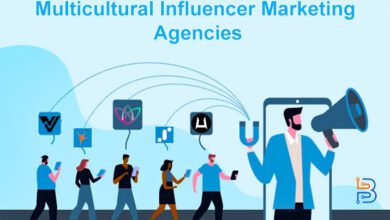Mastering the Sales Cycle- Stages and Tips

A company needs to effectively manage the sales cycle especially in today’s highly competitive market environment. The sales cycle refers to the time a customer spends in the buying process and it’s usually divided into various stages; adopting and managing the different stages of the buying cycle is critical to the enhancement of sales.
Before going into the stages of this cycle and the tips that accompany them, one needs to understand the concept of this cycle before going deeper. Inside of this article, we will discuss the different phases of the sales model and offer strategic recommendations for mastering the profession of a sale.
Stage of the Sales Cycle and Tips
Here are some key stages of the sale cycle and tips to navigate each stage successfully.
Prospecting
Prospecting is the first step in the sales cycle to find potential clients for your product or service. This step entails extensive market research, lead generation, and builds a pool of prospects. Effective prospecting is the basis for successful sales efforts since conversion rates are higher when targeting the correct audience.
Tips for Prospecting Success
The following are tips that will boost your prospecting efforts and help you find golden opportunities.
- Use data analytics tools to find patterns and trends that can help you locate potential clients.
- Create an extensive database with all the pertinent information and contact details of possible leads.
- Establishing connections within your industry and asking for recommendations are great ways to find new clients.
Initial Contact and Qualification
The next step is to initiate contact with potential leads to qualify them further after they have been identified. This step depends on understanding the prospect’s requirements, financial situation, and decision-making process. Qualifying leads ensures that time and resources are allocated to those with the best chance of converting.
Tips for Initial Contact and Qualification
Here are some tips for making memorable initial contacts and effectively qualifying your leads
- Show genuine interest in the prospect’s wants and challenges during initial interactions.
- Create targeted questions to assess the prospect’s budget, timeline, and needs.
- Customize your presentations to show how your product or service solves the prospect’s problems.
Presentation and Demonstration
Once qualifying leads are gathered, the sales process advances to the presentation and demonstration step. Make sure to emphasize the advantages of your offer and address any concerns the prospect may have at this point. A powerful presentation can greatly influence a prospect’s decision-making process.
Tips for Effective Presentations

These are some valuable tips that help you captivate your audience and drive results
- Show how your product or service solves the prospect’s concerns or improves their condition.
- Charts and product demos make presentations more exciting and memorable.
- Anticipate and handle prospect complaints to show your commitment.
Handling Objections and Negotiation
Effective salespeople see objections as opportunities to learn more about the prospect’s concerns because they are a normal part of any sales process. If objections are handled with empathy and solutions, negotiations progress. This goes in improving the relationship between the parties.
Tips for Handling Objections and Negotiation
Following are the tips for handling objections and negotiation
- Empathize and validate the prospect’s concerns.
- Instead of debating, offer answers that address the prospect’s worries.
- Seek mutually beneficial agreements meeting the prospect’s expectations and business goals.
Closing the Deal
Closing the deal is vital in the sales cycle. This entails settling any outstanding issues, confirming the prospect’s commitment to make a purchase, and completing the terms. A strong closing ensures the sales effort pays off with a completed deal.
Tips for Closing Successfully
Here are the tips that help you close deals with confidence and finesse.
- Promotion of time-sensitive offerings helps the prospect decide.
- Trial closures can assess the prospect’s readiness and handle any concerns during the sales process.
- Clear and straightforward call to action guides the prospect to finish the transaction.
Follow-Up and Relationship Building
The final stage of the sales cycle extends beyond the transaction. Building relationships and following up are essential for keeping customers and encouraging loyalty. A happy customer is more likely to support your brand and come back again.
Tips for Effective Follow-Up
These are some tips for effective follow-up and building lasting relationships with your prospects
- Tailor your follow-up communication to the customer’s preferences and previous interactions.
- Request feedback on the purchasing experience to identify areas for improvement and showcase your commitment to customer satisfaction.
- To maintain a positive relationship, offer ongoing value through newsletters, exclusive offers, or relevant content.
Embracing Technology in Sales
Technology can transform sales in the fast-changing market. Innovative sales tools and platforms help improve operations, collaboration, and insights. Sales technology uses AI-driven data to improve prospecting and automate marketing processes to target high-potential leads.
CRM integration centralizes customer data for efficient contact and qualification, while AI-powered chatbots ensure prompt responses. Enhanced presentation techniques include immersive technologies like VR or AR and objection handling benefits from data insights, using analytics to identify and proactively address objections through tailored strategies and predictive analytics.
Adapting to Market Trends and Customer Behavior
Staying attuned to market trends and understanding customer behavior is essential for better results in sales. Continuous market research is crucial to product development, and customer needs alignment. Develop flexible sales strategies that adapt to market dynamics, focusing on customer-centric focus. Establish customer feedback channels for continuous improvement and refine sales strategies to align with evolving preferences.
Final Thoughts
Mastering the sales cycle is an ongoing process that calls for flexibility, compassion, and strategic thinking. Sales professionals can increase success rates and create enduring customer relationships by comprehending and skillfully navigating each stage, from prospecting to follow-up. Implementing the tips will help you develop the abilities necessary to succeed in the constantly changing sales field.






